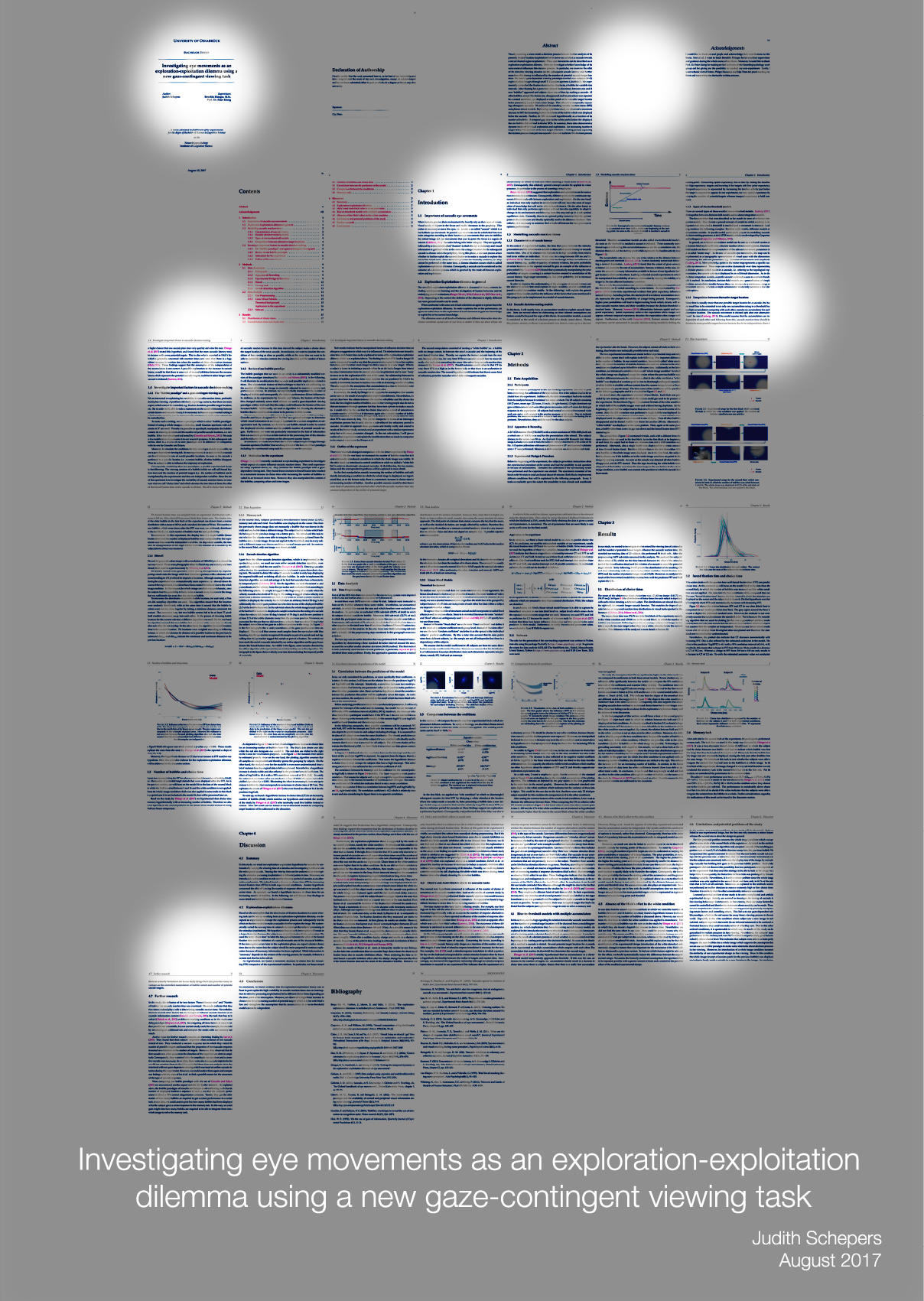Investigating eye movements as an exploration-exploitation dilemma using a new gaze-contingent viewing task
for Judith Schepers
Judith’s thesis explored eye-movements in the context of exploration and exploitation behaviors, replicating and expanding the Hick’s law effect of earlier studies. The Thesis Art piece itself visualizes the participants’ experience of exploring stimuli, inspired by the concept of seeing through Swiss cheese as employed in the underlying study. The design combines multiple miniatures of pages, bringing both the visual and textual aspects of the research together.
The Creation Process
The thesis centered on investigating when and where eye-movements are triggered in response to visual stimuli. Benedikt’s goal was to convey the unique feeling participants experienced while exploring these stimuli, which he compared to looking at a picture through a Swiss cheese. The visual concept was shaped by Benedikt’s earlier Thesis Art piece (Kaufhold’2015), but this time he incorporated actual text and figures from Judith’s study.
Artistic Concept
The multiple miniatures represent the exploration process, offering a fragmented yet comprehensive view of the study. These miniatures mimic the participants’ visual experience, where exploration is hindered by the “blurry” stimuli. The visual design reflects the balance between “exploration” (searching for more information) and “exploitation” (settling on what’s already seen), which is central to the study’s core question.
“The artwork allowed me to experiment with depicting complex cognitive processes visually, and I hope it sparks curiosity in the viewer, making them wonder about the nuances of our study.”
Benedikt Ehinger
Personal Reflection
For Benedikt, this marked the end of a Thesis Art style, where the whole thesis itself is rendered, rather than using the Glyphs of the text. The interplay of design elements — combining figures and text in a fragmented format — allowed for a new perspective on how to visualize complex, scientific ideas. “The result was a compelling artwork that combined the scientific and artistic aspects in a way that felt both playful and thought-provoking”, he adds.
Judith’s thesis wasn’t just a project for Benedikt — it turned into an ongoing collaboration. In fact, Judith is now part of his group, working on her PhD.
